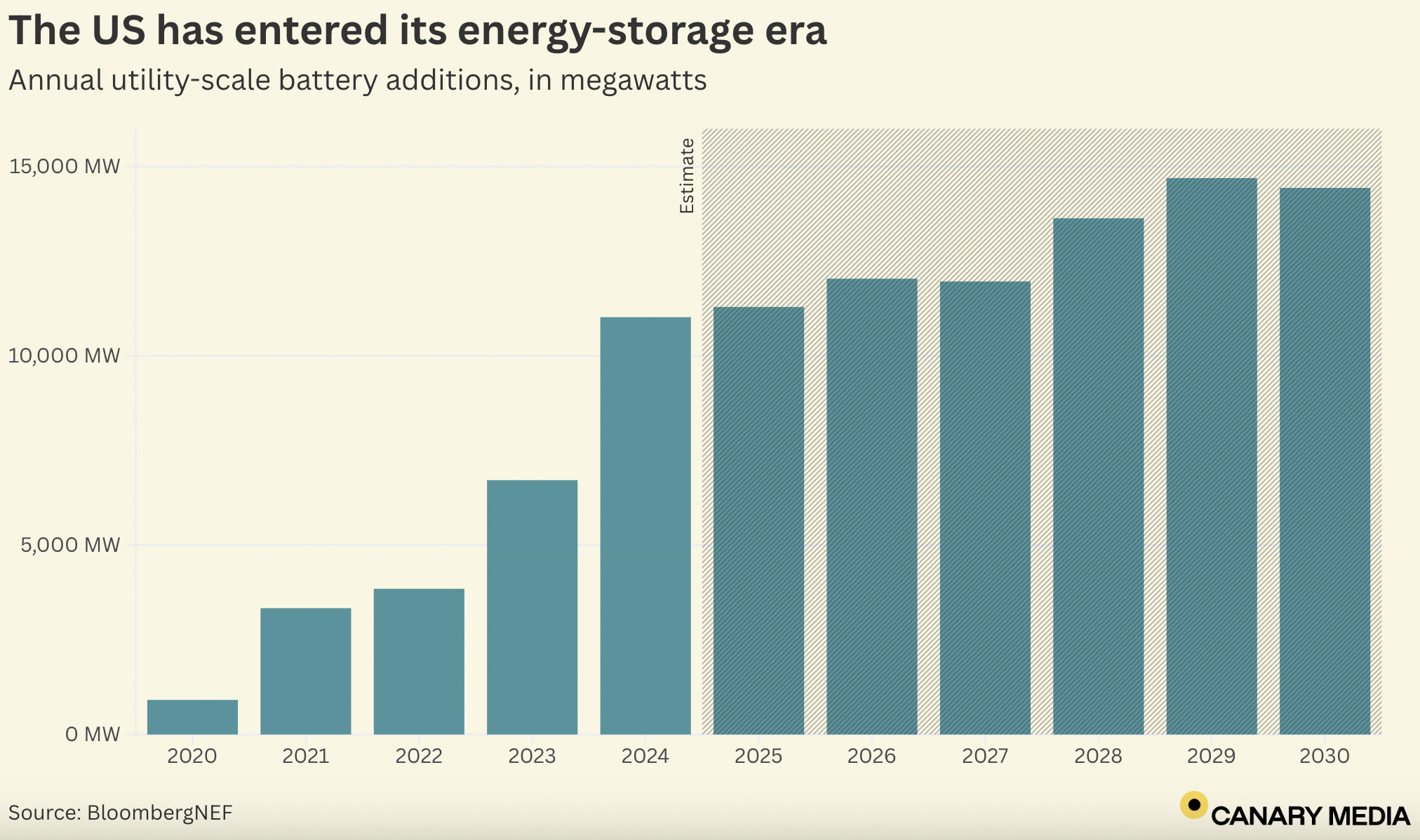
Batteries have quickly become a crucial part of the U.S. electricity grid — and a whole lot more are about to come online.
Over the next five years, the country will build nearly 67 gigawatts’ worth of new utility-scale batteries, per data from research firm BloombergNEF, enough to send almost 284 gigawatt-hours of stored-up electricity back to the grid.
Those are massive figures. Should the forecast bear out, the U.S. will have roughly three times more battery capacity in 2030 than it does now. Such rapid growth is familiar territory for the sector, which jumped from just 1.5 GW of total capacity in 2020 to a whopping 27.3 GW by the end of last year.
The transition to renewable energy — particularly solar — relies on batteries. That’s because communities with lots of solar arrays often generate more power than the grid needs at a particular moment in time. Batteries let these solar-saturated states save that extra energy for later use.
California and Texas, the U.S.’s two leaders on solar, have built the vast majority of the country’s utility-scale storage. Already, the states are reaping the benefits. By spring of 2024, California’s battery fleet had grown large enough to begin displacing some natural-gas use in the evening. Meanwhile, batteries have helped Texas stave off summertime grid emergencies for two years running.
As battery developers propose more, bigger projects, the sector has started to run into some opposition. Just last week, news broke that plans to build New York’s biggest battery on Staten Island fell through following fervent protest from the local community. Fears of battery fires have spread around the country following the massive blaze at California’s Moss Landing facility in January, even though that disaster stemmed from the project’s outdated design.
Still, several broader trends suggest the sector’s growth will continue.
For one, President Donald Trump’s One Big Beautiful Bill Act left incentives for battery storage relatively untouched, even as it yanked away tax credits for solar and wind projects. Then there’s the fact that solar is growing steadily around the country, which will eventually create a need for storage in other states just as it has in California and Texas. Most important of all, demand for electricity is surging nationwide — and batteries are among the cheapest and quickest ways to get more capacity onto the grid.